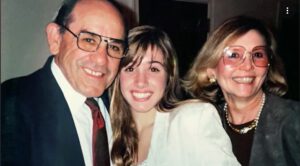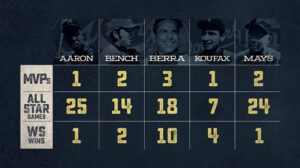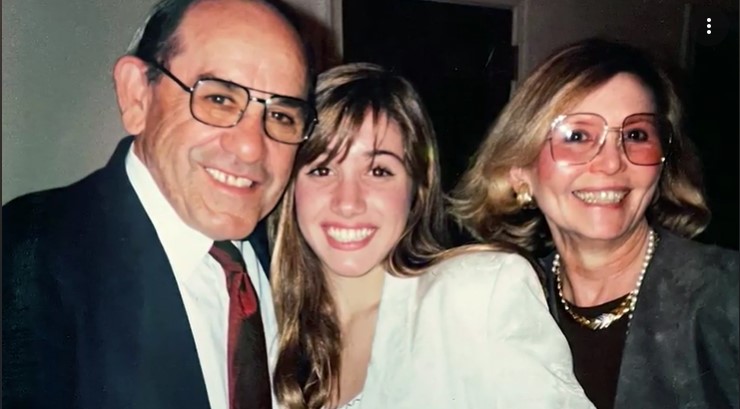Movie Info
Movie Info
- Run Time
- 1 hour and 39 minutes
- Rating
- PG
VP Content Ratings
- Violence
- 0/10
- Language
- 1/10
- Sex & Nudity
- 1/10
- Star Rating
Relevant Quotes
A good name is to be chosen rather than great riches,
and favor is better than silver or gold.
Let another praise you and not your own mouth,
a stranger and not your own lips.

We have all, I am sure, chuckled at one of Yogi Berra’s sayings, such as “Nobody goes there anymore. It’s too crowded.” There’s even a term for these: “Yogi-isms.” His amusing sayings, plus his once almost ubiquitous appearance in TV ads have overshadowed his amazing accomplishments—and it is this which director Sean Mullin and executive producer Lindsay Berra set out to rectify in this delightful documentary. Backing them up is a dugout-full of ball players, sports announcers, and friends, making this a warm entertainment that even non-sports fans will enjoy.
The film starts out with Lindsay, Yogi’s granddaughter, telling us how she was sitting next to Yogi and watching the 2015 All Star Game. There in Cincinnati standing on the field of Grand Ball Park were the four players that 25 million fans had voted as the greatest living players–Hank Aaron, Johnny Bench, Sandy Koufax and Willie Mays. No doubt they deserved to be there, but her grandfather had won more World Series, and been voted Most Valuable Player more times than the others. Feeling the injustice that he had been left out, she said to him, “”Are you dead?’ to which he replied, “Not yet.”
And so, through a host of clips from games, interviews with prominent figures—this includes comedian Billy Crystal, a friend, who agrees with Lindsay, “I think it’s quite evident that his personality overshadowed his talent as a ballplayer”—and archival photos, we are treated to a review of Yogi Berra’s life that ought to convince everyone that Yogi Berra should have been standing on that field with the other four superstars.
During the course of the documentary, which goes back to his boyhood days in St. Louis when there was no bench for him to sit on, so he squatted on the ground in such a way that someone commented that he looked like a yogi, we learn that the 2015 snub was but one of several injustices done to him. During his years as a manager he was too hastily fired two different times despite wining streaks (the first time his team had played in the World Series!). The second firing by Yankees’ owner George Steinbrenner led to a 14 year feud in which he refused all invitations to return to Yankee Stadium, but which ended through the reconciliatory efforts of a female sportscaster.
The film chronicles his unlikely winning of the heart of the beautiful waitress in his favorite St. Louis diner, Carmen—at 5 foot seven he was not the popular image of a tall athlete, nor was he considered handsome. She would become his wife of 65 years and mother of his three sons. All appear in the film, with Dale, who became an excellent ballplayer, retelling his sad story of drug addiction and the family intervention, led by his father, that saved him.
When Yogi came to the Yankee team some players and the press were unimpressed by his appearance, one writer even saying he looked like an ape. His habit of reading comic books in the locker room did not help his reputation. He fell far short of the public image of a tall, handsome ball player. His habit of reading comic books in the locker room did not help his reputation. But his phenomenal ability to hit and catch balls silenced such criticisms. We see lots of clips of his hitting as many balls outside the strike zone as within it. (Roger Angell declares, “He abolished the strike zone.”) And many of the balls were so powerfully hit that they landed out of the ballpark! During one brief period his batting average was over .300. His role as catcher required a knowledge of how the entire game was going and the weakness/strengths of every batter.

He is given credit for helping pitcher Don Larsen pitch a perfect game in the 1956 World Series, the only one until recently. Larsen went along with all of Yogi’s suggestions that day. Also, the long-argued umpire’s call of “Safe” when Jackie Robinson stole home is included, Yogi still arguing that he had put him out—and the numerous shots of the event tends to support his claim that the ump got it wrong. Speaking of Robinson, the film also relates how when the two first met on the field, Yogi thanked him for his service to the nation and welcomed him to the field. No prejudice in this man’s soul.
There is a long section on Yogi-isms, some of which he never said. A publicist who worked with him during his advertising days says she penned a couple, though they worked so closely together that it would be impossible now to tell. There are plenty that he did originate, such as “If you can’t imitate him, don’t copy him;” “It’s Deja vu all over again;” and “When you come to a fork in the road, take it.”
His sayings do indeed endear him, but, as this film convinces us, they should not obscure the fact that Yogi Berra was indeed one of the greatest baseball players of all time. The picture of him displaying the ten World Series rings on his fingers—one every finger—is proof of this, as well as his serving his country in he Navy during WW 2’s D-Day landing and support of the integration of baseball
This review will be in the July issue of VP along with a set of questions for reflection and/or discussion. If you have found reviews on this site helpful, please consider purchasing a subscription or individual issue in The Store.

